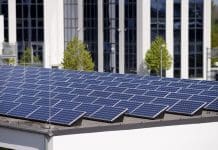Concrete’s role in delivering a sustainable built environment through industry initiatives and performance benefits is increasingly recognised and utilised by design teams, here The Concrete Centre explains more.
The UK concrete industry launched the Concrete Industry Sustainable Construction Strategy back in 2008, and has published its sixth annual performance report, presenting performance data across a holistic set of indicators including materials, carbon, waste and material efficiency, biodiversity and water, and wellbeing.
Carbon is the dominant metric for many in evaluating sustainability performance and the industry target is to reduce carbon dioxide emissions from the manufacture of concrete and constituent materials e.g. cement and meet the targets set in sector Climate Change Agreements. Through investment in innovation and efficient production technologies, the industry has reduced the embodied carbon of concrete, with a 23% reduction in CO2 from 1990.
The sourcing and chain of custody of the goods and products we use in our built environment is of increasing importance. The industry has taken a leadership position in this area and has adopted the BES 6001 framework for responsible sourcing. In 2012, 89% produced in the UK was accredited to this standard and 99% of this concrete achieved a ‘Very Good’ or ‘Excellent’ rating.
The industry has launched its 2020 commitments, which extends the breadth and depth of its aspirations including development of initiatives for low carbon freight and the measurement and management of water usage. One 2020 commitment is to develop a Material and Resource Efficiency Programme to inform best practice across the life cycle of concrete in the built environment.
For example: In 2012, the concrete industry used 62 times more recovered and waste material than the waste it sent to landfill, making the industry a net consumer of waste. In 2020, our target is to reduce waste to landfill to less than 0.5kg per tonne of concrete produced. This represents a 90% reduction from the 2008 baseline.
Concrete Performance Benefits
The performance benefits: durability, robustness, fire resistance, thermal mass, acoustic performance and flood resilience, all contribute to the performance of our built environment. Concrete is a versatile and natural material and is increasingly being exposed in buildings for aesthetic and performance benefits.
Concrete’s inherent thermal mass can save energy during the lifetime of a building, due to the reduced need for heating and cooling. For example, a typical masonry home has a slightly higher level of embodied CO2 than an equivalent timber frame home. A study by the NHBC foundation1 in 2012 found a maximum difference of 4%.
The study found that the operational emissions of concrete and masonry homes were lower over the 60 and 120 years periods used in the study. Similar results were also reached in an earlier 2007 study2 undertaken by Arup, which also considered the effect of climate change on dwelling performance.
This research found that the potential for lower operational emissions in masonry homes enabled them to offset their additional embodied CO2 in as little as 12 years; a fraction of the dwelling’s life.
In whole life performance terms, the benefit of thermal mass is likely to become increasingly important as the climate continues to warm.
Information on the industry initiative is available from www.sustainableconcrete.org.uk. A range of resources for designers are available at www.concretecentre.com ■
1 Operational and embodied carbon in new build housing – a reappraisal (NF34), NHBC Foundation, April 2012.
2 Embodied and Operational Carbon Dioxide Emissions from Housing: A Case Study on the Effects of Thermal Mass and Climate Change, J. Hacker (Arup) et al, Energy and Buildings 40 (2008), pp375-384.
The Concrete Centre
Tel: +44 (0)207 963 8000














